| HOME |
|---|
CEPHEUS
The King
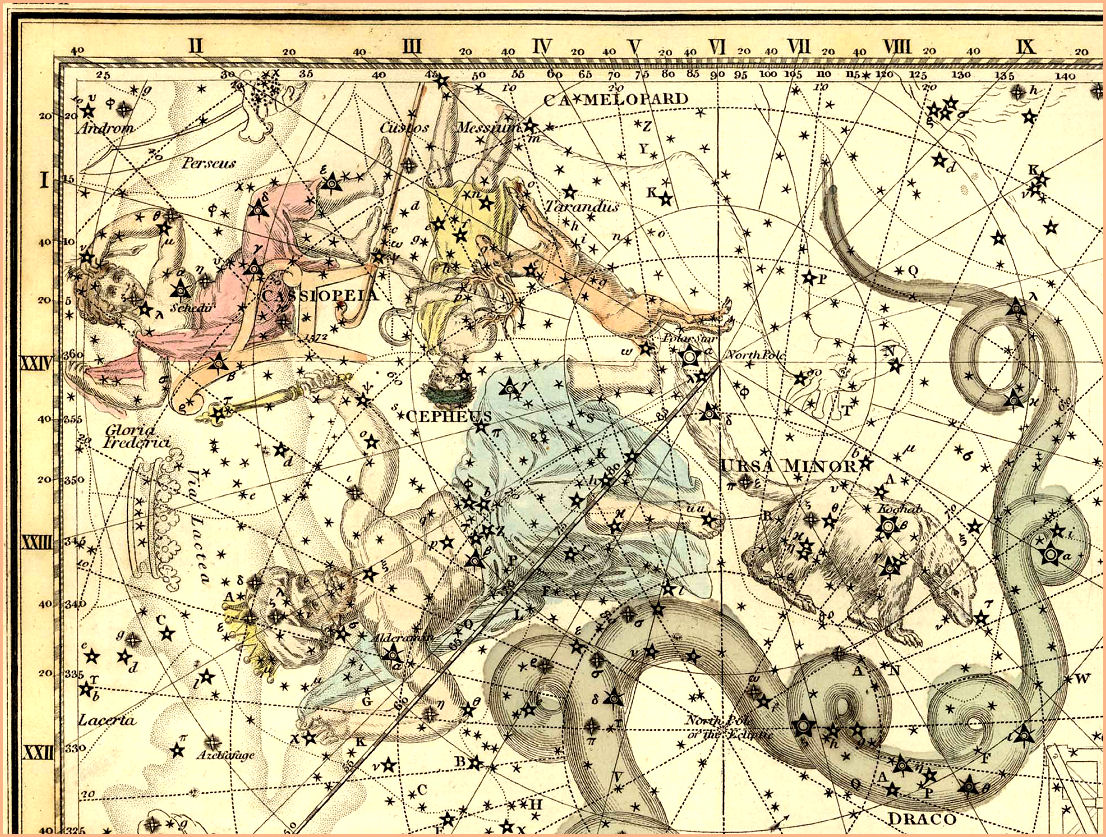
Cepheus - Celestial Atlas by Alexander Jamieson - 1822
| HOME |
|---|

Cepheus was a fabled Ethiopian king, one of six characters placed in the sky to commemorate the Andromeda story, a grand, ages old tale of high adventure and romance. The constellation is about as far north as you can go, being one of the four that closely surround the North Star, Polaris., along with Ursa Minor, Camelopardalis, and Draco. Cepheus is visible all night long from most northerly latitudes, forever circling the north star, never setting below the horizon. It is a relatively indistinct constellation, whose brightest stars seem to form the shape of a steeply pitched roof house, rather than a monarch on a throne. But for all its superficial ambiguity, Cepheus does contain some objects of great interest.
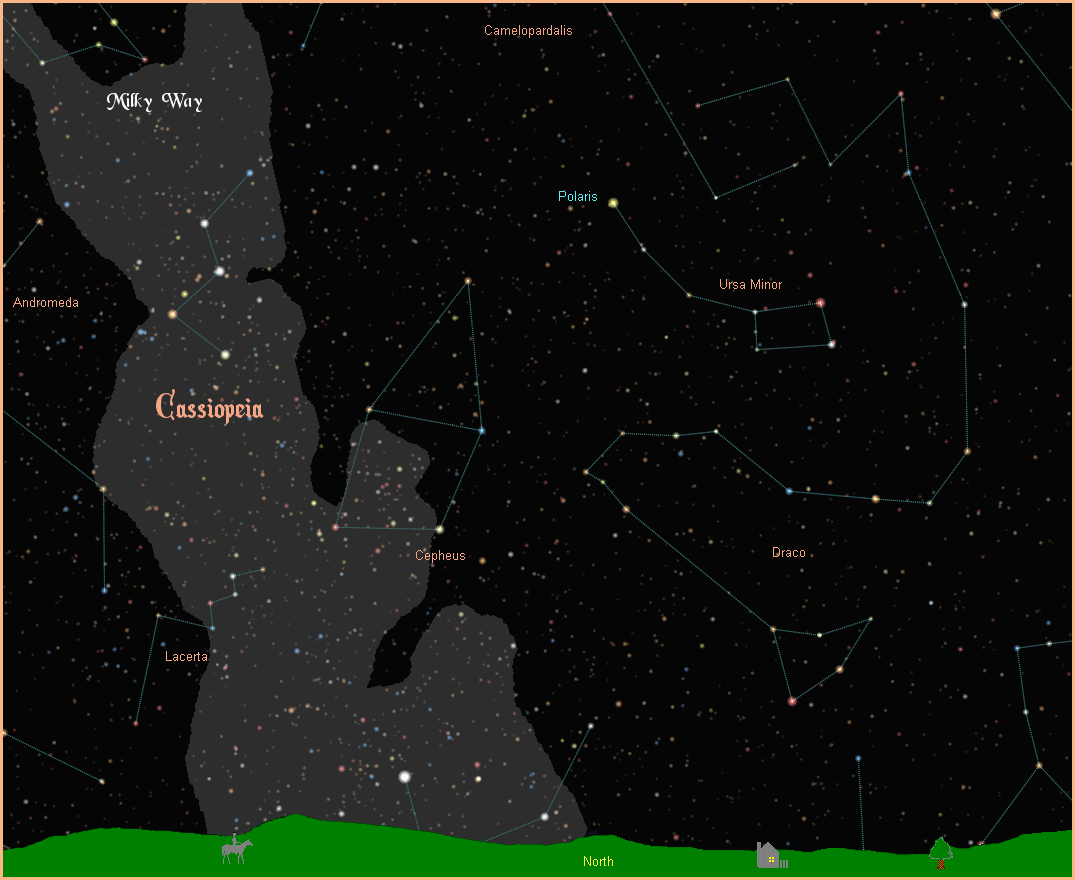
The alpha star in the constellation is Alderamin, from the Arabic for right shoulder, as it indeed represents the right shoulder of the king. It is an A8V white main sequence star, with a magnitude of 2.5, only 49 light years away. Due to precession - the gradual shifting of the stars caused by the gyroscopic wobble of Earth's axis - Alderamin will be our north star or pole star in the year 7500, the position now occupied by the star Polaris.
The other three named stars in Cepheus have Arabic origins that have nothing to do with a king, and suggest that ancient Arabs saw much different figures in this part of the sky. Beta Cephei is named Alfirk, meaning the herd. It is a B1V blue main sequence star, with a magnitude of 3.1, quite far away at a distance of 690 light years.
Gamma Cephei has the name Alrai, Arabic for the shepherd. It is a K1III orange giant, with a magnitude of 3.2, and only 49 light years away. Precession will move Alrai closer to the north celestial pole than Polaris by the year 3000, making it our next north star. It is a binary system, with a small red dwarf companion star in an eccentric 60 day orbit, separated by about 12 AU (1.7 billion miles). In 2002, a Jupiter sized planet was discovered in orbit around Alrai.
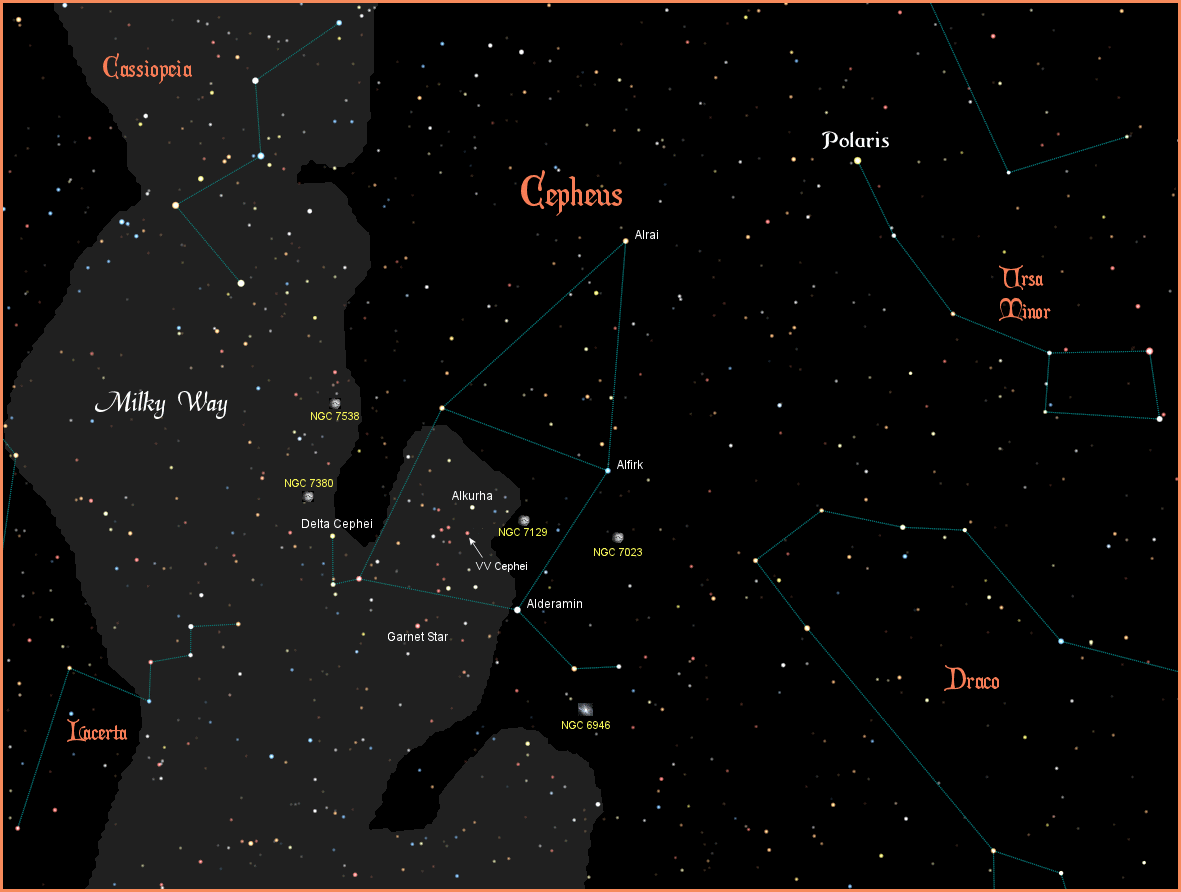
In the centre of the constellation is Xi Cephei, named Alkurhah, from an ancient Arabic phrase referring to the white blaze on the forehead of a horse, an image that fits surprisingly well. With a combined magnitude of 4.29, it is a triple star system, consisting of an A3Vm white main sequence star with an unusually high metallic content, and two F2IV yellow subgiants, all residing at a distance of 192 light years.
At magnitude 4.23 is Mu Cephei, named the Garnet Star by 18th century astronomer William Herschel who discovered the planet Uranus. The Garnet Star is an M2I red supergiant, that rivals the mammoth Betelgeuse in the constellation Orion. It is not only one of the reddest stars ever discovered, it is one of the five largest known stars in the entire Milky Way galaxy, with a diameter estimated at 850 million miles, compared to our Sun, with a diameter of one million miles. Fortunately for us, this monster star is very far away, out at a safe distance of 2,000 light years.
Coincidentally, Cepheus harbours another M3I red supergiant, that is thought to be even larger than the Garnet Star. At a distance of 2,400 light years, it appears as a relatively dim 4.9 magnitude star, named VV Cephei. Its true brightness could be as much as 500,000 times greater than our Sun. It is currently considered the second or third largest star in the galaxy.
Last, but far from least is probably the most famous star in the constellation, the dim, unnamed B8III blue giant, Delta Cephei. One of a group of three indistinct stars marking the king's head, it is 882 light years away with a magnitude of 6.31. It is a very special type of variable star, whose variations in color and brightness are regular and predictable, allowing astronomers to use it as a benchmark for measuring distances in space. Delta Cephei was the first of these stars to be discovered, and all subsequent stars of this type are now classified as Cepheid variables. It was a Cepheid variable in the Andromeda Galaxy that allowed Edwin Hubble in 1923 to determine its true distance, and discover that our Milky Way galaxy was not the entire Universe. It was the first definitive proof there were other galaxies beyond our galaxy, and the true unimaginable scope of the Universe was revealed for the first time. It was as monumental as finding out the Earth wasn't flat, and it all started with the star Delta Cephei.
So far the only star in Cepheus with a confirmed planet is the big, bright Alrai, mentioned above, easily visible with the naked eye. So far it has one confirmed planet 1.85 times the mass of Jupiter. The planet takes 903 days to orbit the star at a distance of 2 AU (186 million miles), and according to The Open Exoplanets Catalogue, that puts it right in the star's habitable zone, where liquid water can exist. The gas giant planet would presumably be hostile to life, but it could very easily have some nice, friendly, habitable moons. And the system is relatively close, only 49 light years away.
For more information on these and other extrasolar planets, visit NASA's New Worlds Atlas, and The Open Exoplanets Catalogue.
Residing 1,300 light years away, The Iris Nebula is an area of star formation 6 light years across, with a magnitude of 6.8.
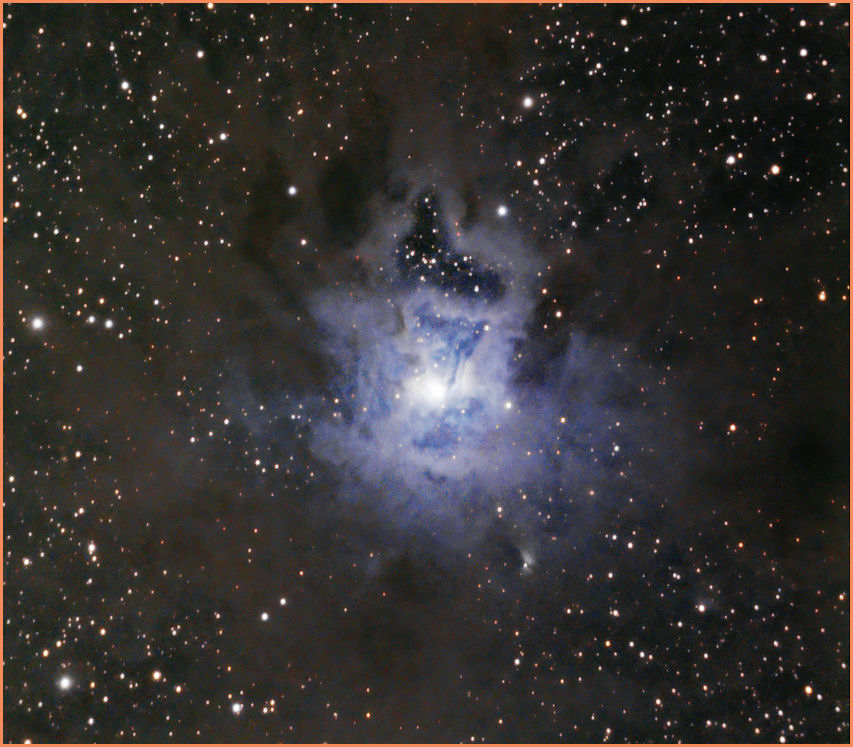
About 3,300 light years away is another star forming nebula, NGC 7129. Measuring about 6 light years across, its relatively dim magnitude of 11.3 makes it best observed in larger telescopes.
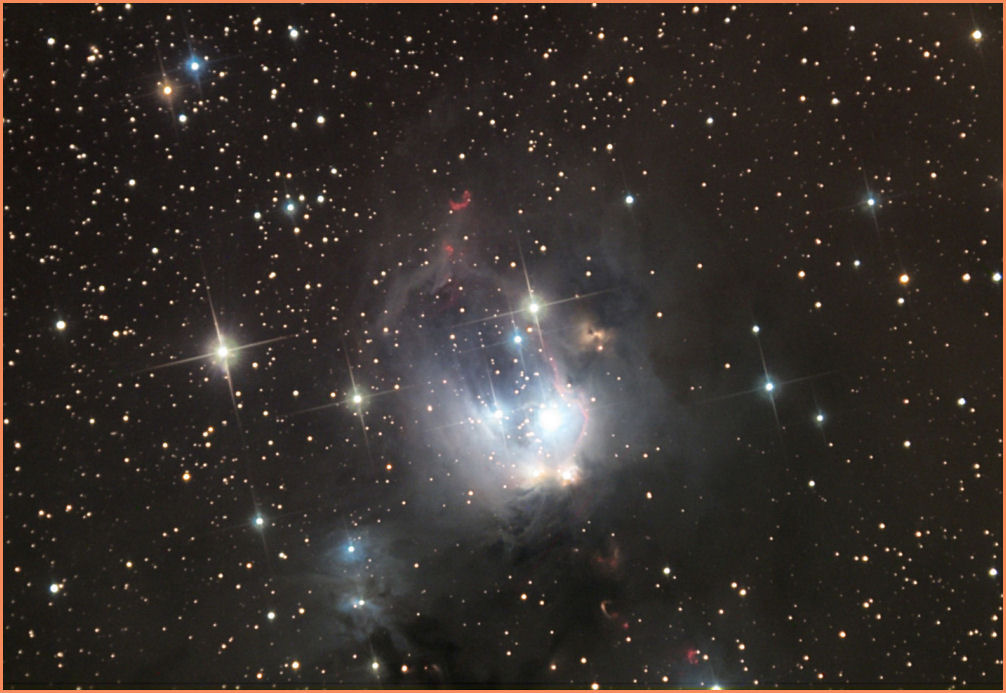
At a distance of 7,000 light years, The Wizard Nebula is a particularly vast area of new star formation measuring 110 light years across. The brightest stars in the nebula shine at a magnitude of 7.9.
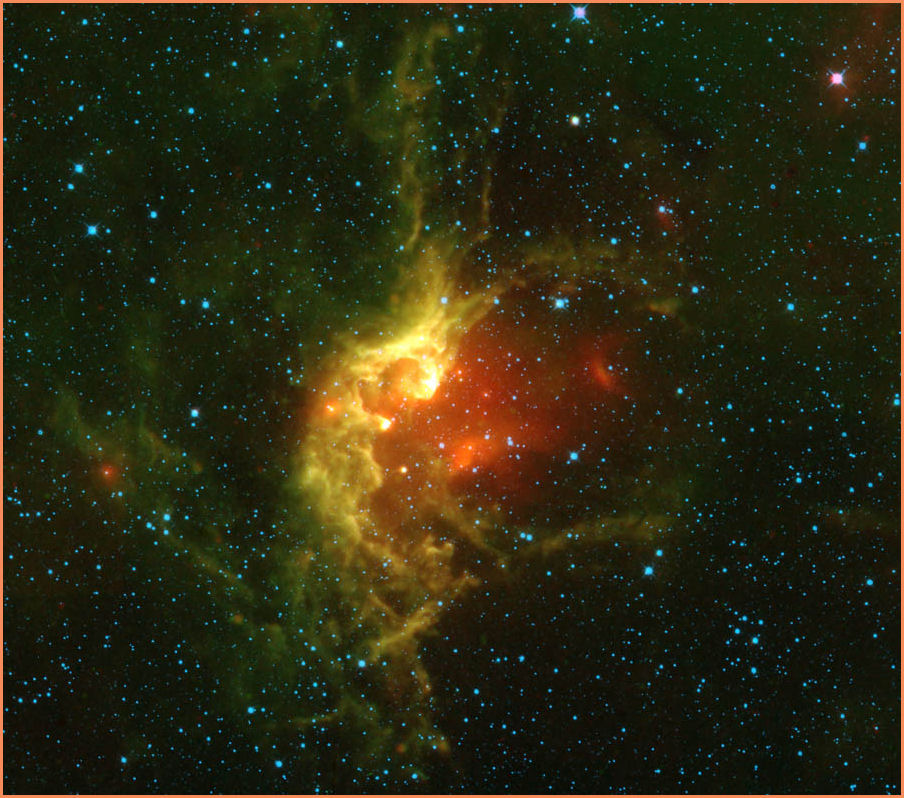
At a distance of 9,100 light years, the star forming nebula NGC 7538 is about 30 light years in size.
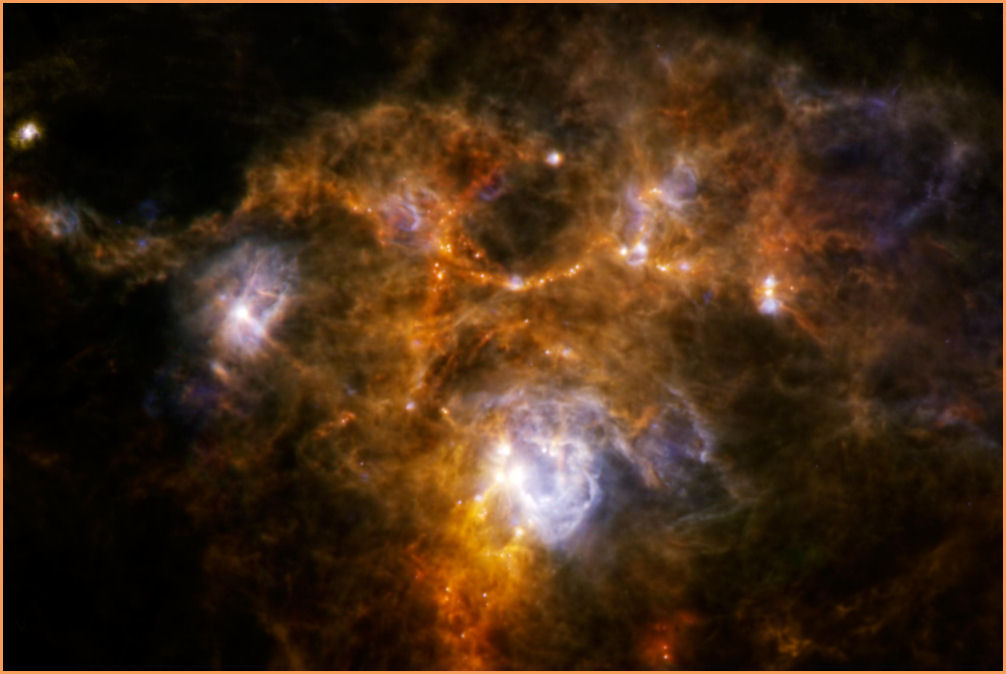
Moving outside our galaxy to a distance of 10 million light years, The Fireworks Galaxy is a face-on spiral galaxy that shines with a magnitude of 8.9, making it a good target for a small scope. The galaxy measures 40,000 light years across, less than half the size of our Milky Way galaxy, and hosts a record nine supernovae explosions, more than any other galaxy.
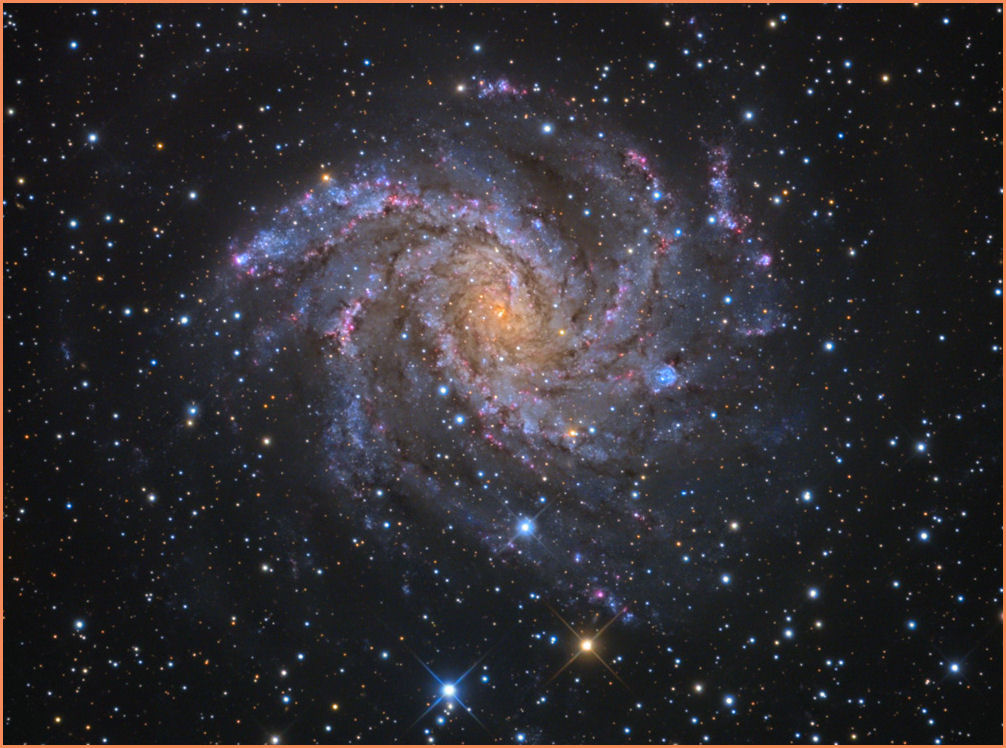
|
|
|
|
|
|